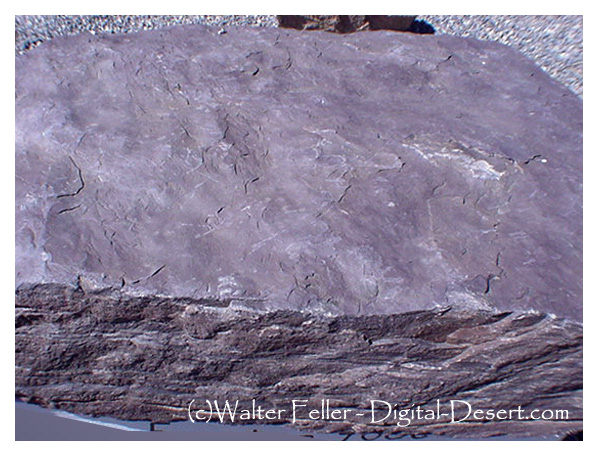|
|
Geology:
Walk Through Time
Johnnie Formation

< Previous - Next >
4,000 foot thick, 600+ million years old. The Death Valley region was on
the margin of a rising and falling sea for 300 million years. The purple
mudstone was formed in a near-shore marine
environment.
Precambrian > Proterozoic eon > Neoproterozoic era > Ediacaran period
Striped Butte in Butte Valley
Steeply tilted limestone beds of the Permian Anvil Spring Formation. A major fault behind the butte separates it from Precambrian Noonday and Johnnie ...
|
The Johnnie Formation is an important geological unit located in the Death Valley region of California. This formation is part of the broader geological context of the area and provides significant insights into the early geological history of this part of the United States.
Characteristics and Composition
The Johnnie Formation primarily consists of:
Sedimentary rocks: Including shale, siltstone, and sandstone.
Carbonate rocks: Mainly limestone and dolomite.
Geological Significance
Age: The Johnnie Formation dates back to the Late Proterozoic to Early Cambrian period, making it about 550 to 800 million years old. This places it at a crucial point in Earth's history, just before the Cambrian explosion of life.
Paleoenvironmental Indicators: The sedimentary nature of the rocks in the Johnnie Formation suggests they were deposited in a marine environment. The presence of varying sediment types indicates changes in sea level and possibly climate conditions over time during its deposition.
Tectonic Activity: Like many formations in Death Valley, the Johnnie Formation has been affected by extensive tectonic activity. This has influenced its present-day exposure and structure, providing valuable insights into the geological processes that have shaped the region.
Research and Relevance
The Johnnie Formation is studied for its contributions to understanding the transition from the Proterozoic to the Phanerozoic eons. Its sediments and fossils provide crucial information on the environmental conditions and biological communities that existed at this pivotal time in Earth's history. The formation is also of interest in broader studies concerning the tectonic and sedimentary evolution of the western United States.
|

